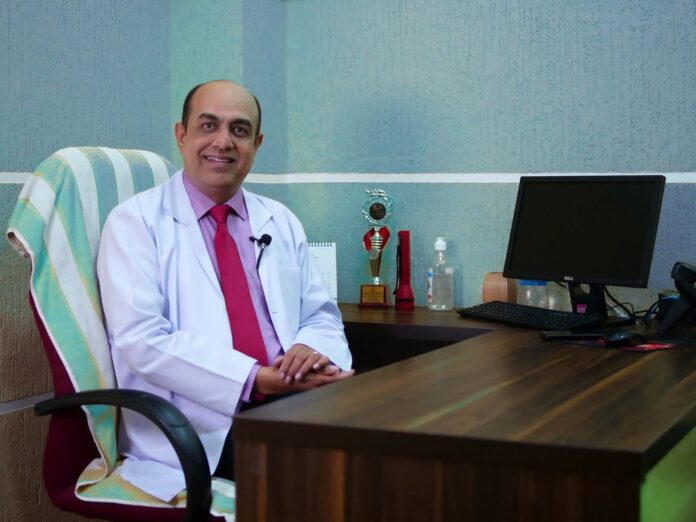Passive smoking, also known as second hand smoke exposure, continues to be a pressing global health concern, particularly in the context of its association with the development of lung cancer —a disease with profound implications for public health. Driven by the inhalation of tobacco smoke produced by others, non-smokers face a significant risk due to the toxic chemicals released during the combustion of tobacco.
Prevalence and Global Impact:
The prevalence of passive smoking varies worldwide, influenced by cultural, social, and economic factors. Shockingly, an estimated 1.1 billion non-smokers globally are exposed to second hand smoke, placing their health in jeopardy. Despite progress in smoke-free policies, public spaces like restaurants and workplaces in many regions still pose a substantial threat to non-smokers, especially in low-income communities where such protective measures may be lacking.
Chemical Composition and Carcinogenic Risks:
Second hand smoke is a complex mixture containing over 7,000 chemicals, some of which are known carcinogens. Substances like benzene, formaldehyde, arsenic, ammonia, and polycyclic aromatic hydrocarbons contribute not only to direct carcinogenicity but also act as promoters and enhancers of cancer development.
Passive Smoking’s Link to Lung Cancer:
While the connection between active smoking and lung cancer is well-established, the impact of second hand smoke on non-smokers should not be underestimated. The World Health Organization (WHO) estimates that approximately 600,000 deaths annually can be attributed to second hand smoke, with a significant proportion linked to lung cancer. Rigorous studies, including a meta-analysis by the International Agency for Research on Cancer (IARC), demonstrate a 20-30% increased risk of lung cancer in non-smokers exposed to second hand smoke.
Mechanisms of Carcinogenesis:
Passive smoking contributes to lung cancer through several mechanisms. Carcinogens are absorbed through inhalation, inducing genetic mutations and DNA damage in lung cells. The toxic chemicals disrupt respiratory system function, compromising lung defense mechanisms and increasing vulnerability to cancerous cell growth. Chronic inflammation triggered by second hand smoke is a recognized precursor to cancer development, further emphasizing the multifaceted impact of passive smoking on lung health.
Vulnerable Populations:
Children and pregnant women emerge as particularly vulnerable groups. Children’s developing respiratory systems and weaker immune defenses increase their susceptibility to respiratory infections, asthma, sudden infant death syndrome (SIDS), and the long-term risk of lung cancer in adulthood. Pregnant women exposed to second hand smoke face heightened risks of adverse outcomes, including preterm birth and low birth weight, with potential implications for future health, including an increased susceptibility to lung cancer.
Public Health Initiatives and Challenges:
Efforts to combat passive smoking have seen the implementation of smoke-free legislation globally. However, the effectiveness of these policies varies, with challenges arising from cultural norms and political constraints. Continued advocacy for stricter regulations and heightened public awareness remains imperative to shield individuals from the dangers of passive smoking.
Promoting Smoke-Free Environments:
The promotion of smoke-free environments not only protects non-smokers but also encourages smokers to reconsider their habits, fostering a positive impact on public health. Establishing smoke-free homes, workplaces, and public areas significantly reduces second hand smoke exposure, subsequently lowering the risk of lung cancer in non-smokers.
Educational Campaigns and Collective Responsibility:
Educational campaigns and public awareness programs play a pivotal role in disseminating information about the perils of passive smoking. By emphasizing the importance of individual and collective responsibility, society can actively contribute to the creation of healthier and safer environments for everyone.
In conclusion, passive smoking represents a formidable health threat, underscored by its robust association with lung cancer. The evidence linking second hand smoke to this deadly disease necessitates ongoing efforts to implement comprehensive smoke-free policies, elevate public awareness, and educate individuals about the detrimental effects of passive smoking. The collaborative pursuit of a smoke-free world is not only a health imperative but a collective responsibility for the well-being of current and future generations.
This article is written by By Dr. Jojo V Joseph.
Dr. Jojo V Joseph of Kerala is a renowned oncologist and cancer specialist, who has made significant contributions in the field of cancer research and treatment. Dr. Joseph has dedicated his life to helping people diagnosed with cancer, providing them with the best possible care and support.





[…] post Passive Smoking and Lung Cancer: The Silent Killer appeared first on Borok […]
[…] post Passive Smoking and Lung Cancer: The Silent Killer appeared first on Borok […]